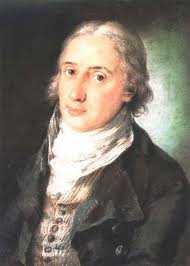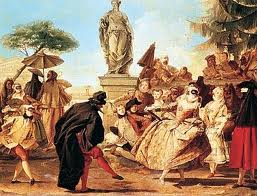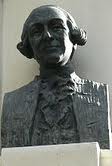Enlightenment theatre: Leandro Fernández de Moratín & Ramón de la Cruz
Theatre was a very popular genre during the Age of Enlightenment because it was a way of entertaining the masses. The main cultivators of the Spanish Enlightenment theatre were the members of the Madrid literary group, and they created a new form of theatre to satisfy the moral and politic interests of the time. There were three main types of plays: traditional (almost no change from the previous forms of theatre), neoclassical (classical plays with slight adaptations to match the interest of the watchers) and folkloric (farces written in verse). The latter were the most popular amongst the Spanish population and were also called 'sainetes'. The two main enlightenment play writers were Leandro Fernández de Moratín and Ramón de la Cruz.
Leandro Fernández de Moratín - Life and Works

Leandro Fernández de Moratín was born in Madrid in 1760. His father was the poet and play writer Nicolás Fernández de Moratín, and from him he got his love of words as well as his neoclassical orientation. In 1787 he went to Paris with Jovellanos, as secretary to the Count of Cabarrús. He learnt a lot from the French writers, and back in Madrid he published his first success, "La derrota de los pedantes", a satire in prose making fun of the bad writers of his time. He became friends with Godoy upon his arrival in Madrid and got his protection, and he helped him get his comedies on to the stage.
Leandro traveled around France (he was there at the dawn of the French Revolution), Italy and England for five years, and returned to Madrid in 1797 as secretary of Language Interpretation. This job helped him live without having to worry about money, which allowed him to write freely. In 1808 after the fall of Godoy he took the side of the French, and Joseph Bonaparte named him as his main librarian. From there on he was accused of being an "afrancesado" and he had to take refuge in Valencia, Peñíscola and Barcelona after the change in government. He finally ended up in France where he spent the rest of his life.

Moratín is considered the most important play writer of the school of neoclassical Spanish Enlightenment theatre. The two main characteristics of his plays are: theatre as a way of entertainment and education and an action that is as close to real life as possible. He kept to the three unit rule that became popular with classic literature. Howeverm he didn't write tragedies, even though it was the neoclassical trend. Instead he preferred to write comedies because, as he put it, comedy "shows men as they are, it mimics existing national customs, vices and common errors, incidents of domestic life; and of these occurrences, of these private interests, there is a plausible story that appears which is both instructive and enjoyable". His better known comedies are "La comedia nueva", which is a satire and critique of the theatre of the time; and "El sí de las niñas" which can be taken as a love story, but in reality the main topic is the oppression of the young women who were forced to marry who ever their mothers wanted. Meanwhile in "La mojigata", he criticized hypocrisy and false devotion. In total he wrote five comedies which helped gain him fame among some of the more illustrious people of Spain.
Ramón de la Cruz - Life and Works

Ramón de la Cruz wrote "sainetes" (farces or one-act comedies) and he was one of the most applauded play writers in the Spanish Enlightenment theatre, although he wasn't much liked among the neoclassical writers. He began writing neoclassical tragedies, and shunned the "disorderly" theatre that the masses liked. However, his economic problems drove him to write simpler plays and he started writing "zarzuelas" (a type of Spanish operetta) and sainetes. He wrote over 400 of the latter, using mostly octosyllabic verses. The characters are typical, folkloric characters and the action takes place in Madrid.
Ramón de la Cruz's most famous sainete is "Manolo", a satire of the neoclassical plays written by his rivals. His motto was "yo escribo y la verdad me dicta" (I write and reality dictates) and from the masses he gathered an endless source of inspiration.

